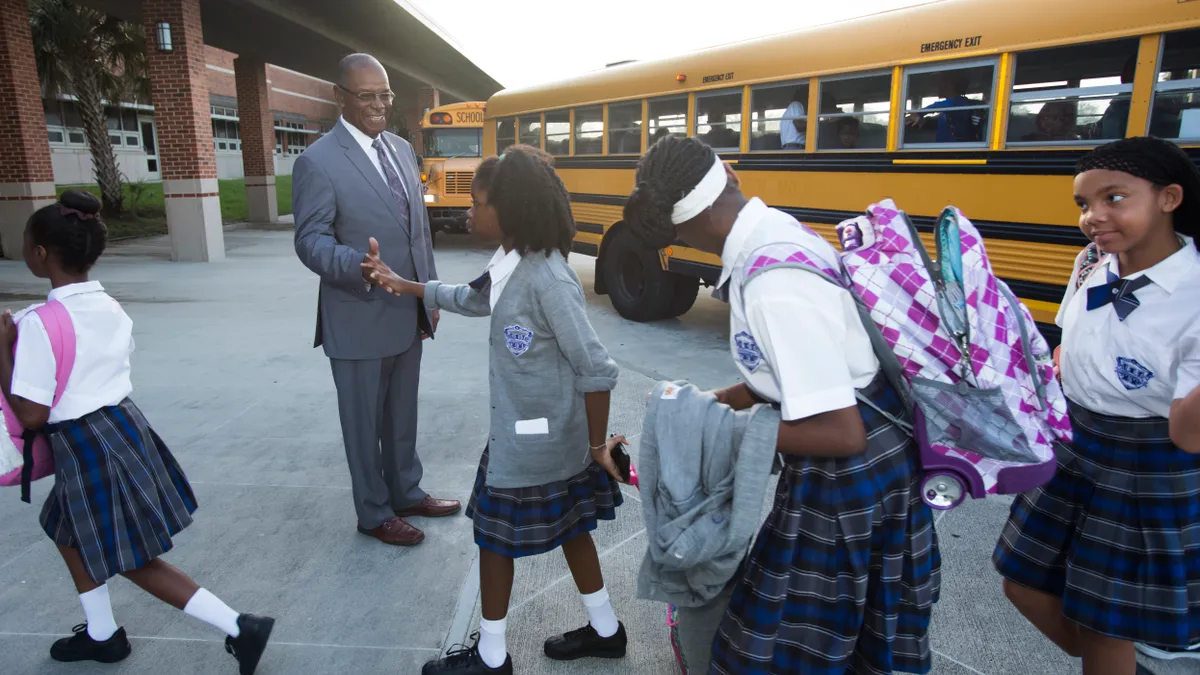Dive Brief:
-
A new report from the National School Climate Center, "Creating School Communities of Courage: Lessons from the Field," used observation and interviews at six school districts nationwide to highlight some of the most effective practices district and school leaders can use to improve school climate and develop social-emotional learning (SEL).
-
Seven main lessons drawn from the study include:
-
Effective leaders connect and collaborate with all stakeholders across the community
-
Committed and trusted educators are necessary for student success
-
Dealing properly with conflict can help build trust
-
Project-based learning and service learning build student leadership skills and community engagement
-
SEL skill integration in daily practice enriches school climate
-
Including all student voices improves equity
-
Peer-to-peer support structures build leadership skills in students and strengthen student bonds
-
-
The main areas of struggle schools continue to confront in their efforts to improve climate include finding ways to effectively address socio-political issues within the school walls, the damaging effects of principal turnovers, the challenge of implementing social and emotional learning instruction in middle school and high school, and the difficulty of enlisting parents and community members — especially at the secondary level.
Dive Insight:
As detailed in the report's executive summary, the districts and networks examined include Center City Public Charter Schools in Washington, D.C.; Monroe-Woodbury School District in Orange County, New York; Parkway School District in St. Louis County, Missouri; Schuylkill Technology Centers in Schuylkill County, Pennsylvania; Simpson County Schools in Simpson County, Kentucky; and West Sonoma Union County High Schools in Sonoma County, California.
The development of a positive school climate has a tremendous impact on the way students and teachers feel about coming to school each day and how successful they are when they get there. A positive school climate can improve teacher turnover rates and provide a more stable environment for learning. Students are also more likely to want to attend a school with a good climate rather than a toxic one and are more focused when they get there, elements that contribute to improved student achievement. Suspension rates also typically improve alongside school climates, as well.
As district and school leaders take steps to improve school culture, the integration of social-emotional learning into curriculum as much as possible is key. However, the National School Climate Center study suggests these efforts are most successful when teachers and students are fully involved in the process.
As the summary of the report states: “Rather than relying on a burdened bureaucracy to devise, plan, act, and enforce policies that reflect the best interests of students, the students themselves must be the central driving forces of change. In order to elevate the needs of students above all else, the students themselves must be at the core of reform efforts. The first step in this process must be for schools to ensure that adults employed in the service of students are wholeheartedly committed to putting the needs of the whole child first.”
School climate is increasing in importance as a measure of school success. Under the Every Student Succeeds Act, states had the option of choosing measures of school climate, which are generally related to school safety and the creation of an environment conducive to learning, as a fifth indicator of school quality. Six states chose that measure as an indicator in their final ESSA plans.













